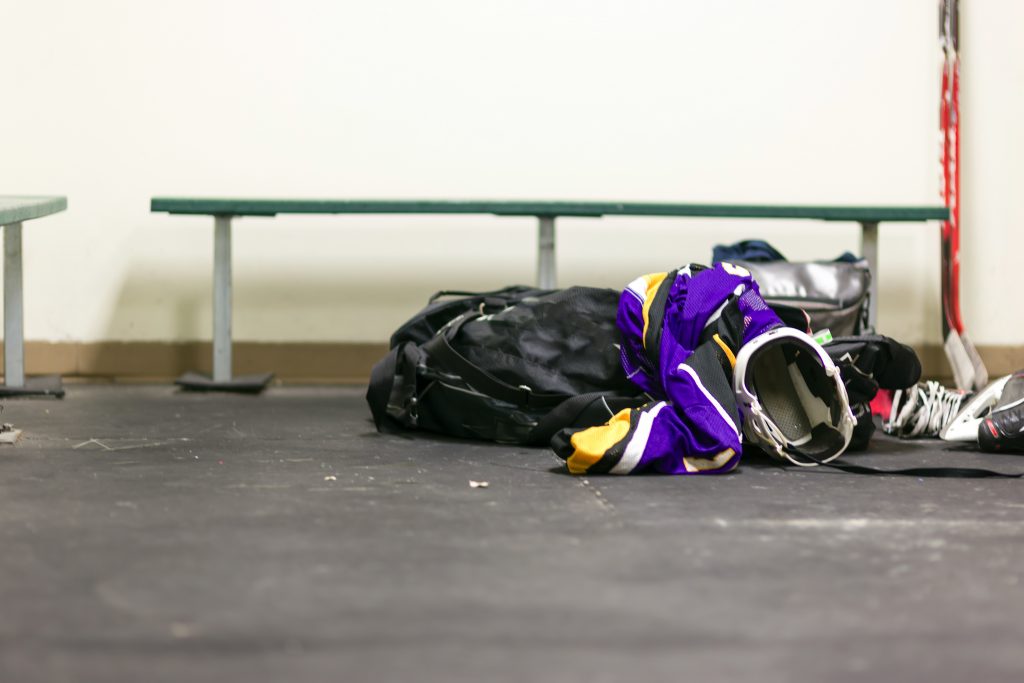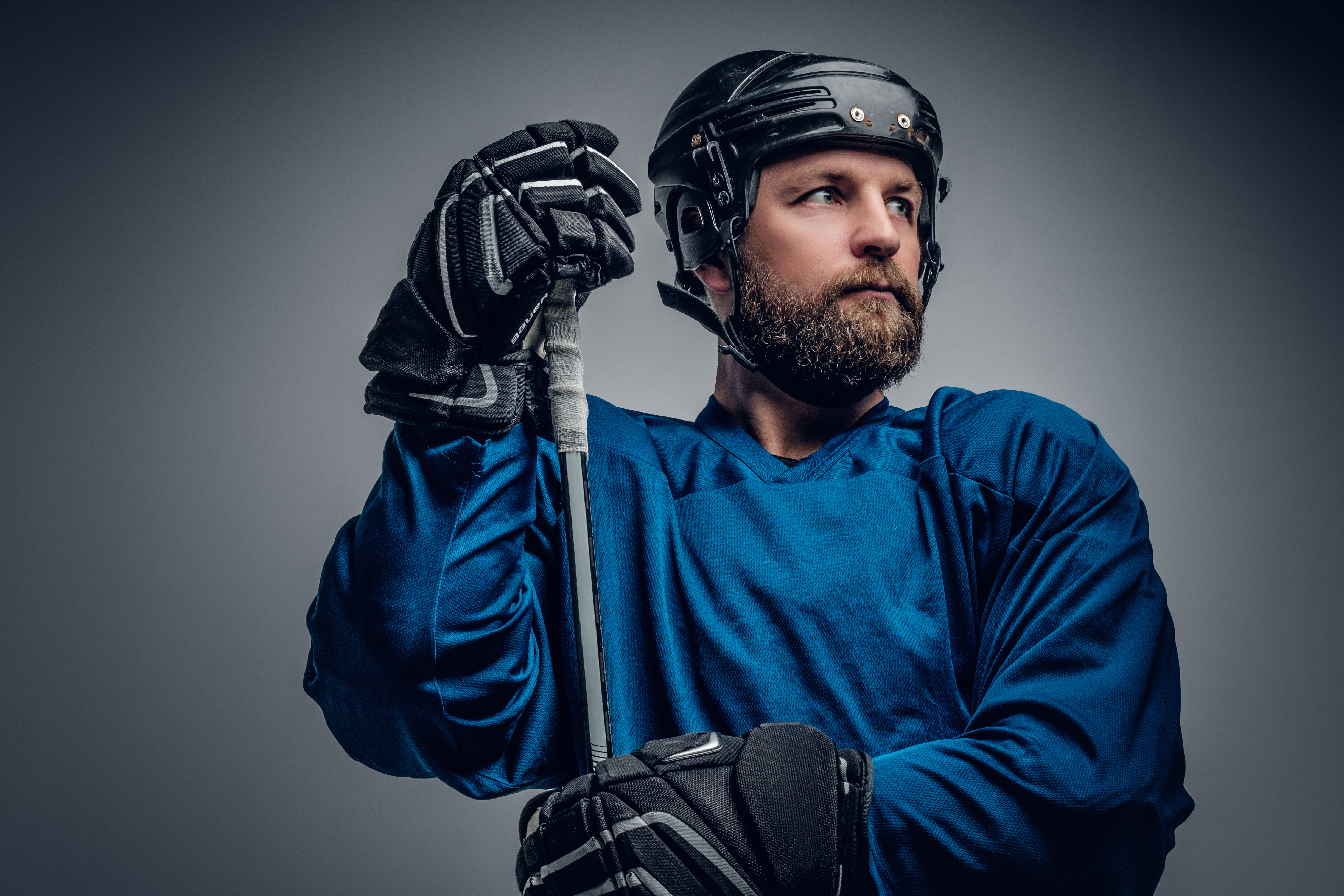Helmets, pads, protectors, undergarments, and all the standard hockey equipment need to be properly cleaned and maintained. Otherwise, you run the risk of rink stink, a smell that you, as a hockey player, are only too familiar with. Bacteria, mold, and fungus build-up causes the foul odor; sports gears absorb all these nasty things from the athlete’s body, resulting in a stench that is basically bacteria waste.
Moreover, if not properly maintained, your hockey gear can become breeding grounds for bacteria that could infect you and make you ill, causing you to miss games.
1. Jersey, Stockings, Throat Protectors, And Undergarments
After each game or practice, make it a habit to wash these items. Don’t put them in the dryer after washing. It’s best to air dry them—hang them or put them out and lay them flat to dry. Don’t forget to regularly clean and air out your gym bag too. To prevent that old gym bag smell, use a hockey sports bag deodorizer.
2. Athletic Supports
There are two types of athletic supports: jockstrap for males or jill strap for females and boxer shorts style. These are fitted according to a player’s waist size. If the strap on the jock or jill strap has a tear, you should repair or replace them immediately. After each game or practice, both the strap and protective cup should be washed and hung to dry. Before washing, be sure to remove the plastic protective cup. If you see cracks on the plastic protective cup, replace immediately.
3. Shin Pads
Clean your shin pads after each use by mixing a little laundry soap with water, then using a soft scrub to brush the padding. Hang this equipment to dry—remember to air-dry only. Ensure a proper fit by checking the length of the straps with the shin pads on. Also, using Velcro straps to keep shin pads to the legs is cheaper than using tape. Thus, to avoid getting hurt on the shin, have a look at Honest Hockey’s high quality reviews to acquire the best shin pads.

4. Pants
You should replace pads that have cracks in them as they’re no longer effective. Tears in the outer shell of the pants should be immediately repaired. Inspect also the inside of the pants for signs of tearing. If you see any tears, fix them too. Air-drying the pants after use is essential. Hang them in a well-ventilated area. You also have to periodically remove all removable paddings and wash them with a mild detergent. Don’t forget to air-dry them only.
5. Skates
Open boots wide to dry skates and pull out removable liners after each use. Check blades for sharpness or any signs of bending, which can be corrected as well as blade holders or blades that are cracked, loose rivets, and loose blades. Skates should be sharpened weekly, especially if you are on the ice, at least, thrice a week.
If you notice that you’re having problems stopping or turning, try sharpening your blades; if you hear squeaks whenever you stop, there could be bending. You should also regularly check your skate boots, eyelets, and laces. Replace or repair as needed. Remember to wipe dry your skate blades after each session. Place the skate guards on the skate blades to avoid damaging them during transport or when walking on non-ice surfaces.
6. Shoulder Pads
Check for any cracking or tearing in any parts of the pads. If you see any, repair them immediately. Missing fasteners or rivets should be replaced promptly. Hang shoulder pads to dry after each use. Something to keep in mind: There are specialty hockey hangers and racks you can use for your equipment; very useful for drying and storing your gear. Also, have your hockey gear cleaned by professionals once or twice a year. They have specialized sports equipment cleaning services that could thoroughly remove bacteria and odors.
7. Elbow Pads
You should pay attention to the straps and make sure that they attach comfortably to the arms. Keep in mind that straps should not be replaced with tape as this can affect circulation and cause you discomfort, not to mention decreased protection.
Dry your elbow pads in a well-ventilated area to keep the donut pad from breaking down. Wash these pads the same way you wash shin pads. The same should be done to the goalie’s pads.
8. Gloves
Air dry your gloves after each use, but don’t dry them over an open heat source. Don’t hang on to gloves with missing finger pads or roll pads. Repair or discard them. Worn out palms should be replaced to avoid injury.
9. Helmet
Air-dry your helmet after each session. Check regularly to make sure that your helmet’s screws are in place and secure. Use only manufacturer-approved replacement parts. You shouldn’t paint your helmet, which could weaken the helmet’s structure and void the CSA certification. Drilling holes, removing clamps or chin cup, or side straps will also void the CSA certification. A tampered helmet could weaken its structure and put you in danger.
10. Sticks
Keep your sticks away from any direct heat source, as your sticks could dry out quickly. Although taping the stick’s blade is a personal preference, some players put tape on the blade for better puck handling.
Conclusion
Take good care of your hockey gear, and you’ll enjoy it for longer. Clean it, dry properly, and maintain it. Your equipment will last longer, plus it would smell better. You’ll no longer inflict rink stink on yourself and others. Finally, remember to keep safe out there.
